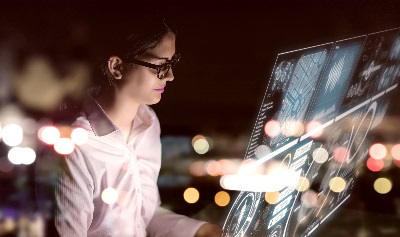-
Audit approach overview
Our audit approach will allow our client's accounting personnel to make the maximum contribution to the audit effort without compromising their ongoing responsibilities
-
Annual and short period audit
At P&A Grant Thornton, we provide annual and short period financial statement audit services that go beyond the normal expectations of our clients. We believe strongly that our best work comes from combining outstanding technical expertise, knowledge and ability with exceptional client-focused service.
-
Review engagement
A review involves limited investigation with a narrower scope than an audit, and is undertaken for the purpose of providing limited assurance that the management’s representations are in accordance with identified financial reporting standards. Our professionals recognize that in order to conduct a quality financial statement review, it is important to look beyond the accounting entries to the underlying activities and operations that give rise to them.
-
Other Related Services
We make it a point to keep our clients abreast of the developments and updates relating to the growing complexities in the accounting world. We offer seminars and trainings on audit- and tax-related matters, such as updates on Accounting Standards, new pronouncements and Bureau of Internal Revenue (BIR) issuances, as well as other developments that affect our clients’ businesses.
-
Tax advisory
With our knowledge of tax laws and audit procedures, we help safeguard the substantive and procedural rights of taxpayers and prevent unwarranted assessments.
-
Tax compliance
We aim to minimize the impact of taxation, enabling you to maximize your potential savings and to expand your business.
-
Corporate services
For clients that want to do business in the Philippines, we assist in determining the appropriate and tax-efficient operating business or investment vehicle and structure to address the objectives of the investor, as well as related incorporation issues.
-
Tax education and advocacy
Our advocacy work focuses on clarifying the interpretation of laws and regulations, suggesting measures to increasingly ease tax compliance, and protecting taxpayer’s rights.
-
Business risk services
Our business risk services cover a wide range of solutions that assist you in identifying, addressing and monitoring risks in your business. Such solutions include external quality assessments of your Internal Audit activities' conformance with standards as well as evaluating its readiness for such an external assessment.
-
Business consulting services
Our business consulting services are aimed at addressing concerns in your operations, processes and systems. Using our extensive knowledge of various industries, we can take a close look at your business processes as we create solutions that can help you mitigate risks to meet your objectives, promote efficiency, and beef up controls.
-
Transaction services
Transaction advisory includes all of our services specifically directed at assisting in investment, mergers and acquisitions, and financing transactions between and among businesses, lenders and governments. Such services include, among others, due diligence reviews, project feasibility studies, financial modelling, model audits and valuation.
-
Forensic advisory
Our forensic advisory services include assessing your vulnerability to fraud and identifying fraud risk factors, and recommending practical solutions to eliminate the gaps. We also provide investigative services to detect and quantify fraud and corruption and to trace assets and data that may have been lost in a fraud event.
-
Cyber advisory
Our focus is to help you identify and manage the cyber risks you might be facing within your organization. Our team can provide detailed, actionable insight that incorporates industry best practices and standards to strengthen your cybersecurity position and help you make informed decisions.
-
ProActive Hotline
Providing support in preventing and detecting fraud by creating a safe and secure whistleblowing system to promote integrity and honesty in the organisation.
-
Accounting services
At P&A Grant Thornton, we handle accounting services for several companies from a wide range of industries. Our approach is highly flexible. You may opt to outsource all your accounting functions, or pass on to us choice activities.
-
Staff augmentation services
We offer Staff Augmentation services where our staff, under the direction and supervision of the company’s officers, perform accounting and accounting-related work.
-
Payroll Processing
Payroll processing services are provided by P&A Grant Thornton Outsourcing Inc. More and more companies are beginning to realize the benefits of outsourcing their noncore activities, and the first to be outsourced is usually the payroll function. Payroll is easy to carve out from the rest of the business since it is usually independent of the other activities or functions within the Accounting Department.
-
Our values
Grant Thornton prides itself on being a values-driven organisation and we have more than 38,500 people in over 130 countries who are passionately committed to these values.
-
Global culture
Our people tell us that our global culture is one of the biggest attractions of a career with Grant Thornton.
-
Learning & development
At Grant Thornton we believe learning and development opportunities allow you to perform at your best every day. And when you are at your best, we are the best at serving our clients
-
Global talent mobility
One of the biggest attractions of a career with Grant Thornton is the opportunity to work on cross-border projects all over the world.
-
Diversity
Diversity helps us meet the demands of a changing world. We value the fact that our people come from all walks of life and that this diversity of experience and perspective makes our organisation stronger as a result.
-
In the community
Many Grant Thornton member firms provide a range of inspirational and generous services to the communities they serve.
-
Behind the Numbers: People of P&A Grant Thornton
Discover the inspiring stories of the individuals who make up our vibrant community. From seasoned veterans to fresh faces, the Purple Tribe is a diverse team united by a shared passion.
-
Fresh Graduates
Fresh Graduates
-
Students
Whether you are starting your career as a graduate or school leaver, P&A Grant Thornton can give you a flying start. We are ambitious. Take the fact that we’re the world’s fastest-growing global accountancy organisation. For our people, that means access to a global organisation and the chance to collaborate with more than 40,000 colleagues around the world. And potentially work in different countries and experience other cultures.
-
Experienced hires
P&A Grant Thornton offers something you can't find anywhere else. This is the opportunity to develop your ideas and thinking while having your efforts recognised from day one. We value the skills and knowledge you bring to Grant Thornton as an experienced professional and look forward to supporting you as you grow you career with our organisation.
One of the sectors that took a beating at the height of the COVID-19 pandemic was education. The UNICEF, which continues to advocate for the resumption of in-person classes in various countries, mentioned in an article that in 2020, while schools globally were forced to suspend operations for an average of 79 days, schools in the Philippines did not hold face-to-face classes for more than a year and opted instead to have classes through online and distant learning modalities.
The indefinite suspension of classes and the subsequent, abrupt shift to new forms of learning modalities posed several challenges, particularly for marginalized students, such as unequal access to gadgets and online resources. This was another blow to the country which, prior to the pandemic, was already struggling to raise the quality of basic education.
If there is a silver lining, the pandemic shone a light on a not-so-glaring truth: the pivotal role of educational institutions in child rearing and caretaking. When parents had to work from home, they struggled to fulfill their duties as employees and home keepers. These were responsibilities that before the pandemic did not pose any challenge to parents as they had support from teachers in caring and promoting the welfare of their children.
It is not hard to see the reason behind the fervent calls of organizations to persuade schools to conduct face-to-face classes, considering the reduced number of COVID-19 cases and the massive rollout of vaccination efforts. A World Bank policy note cited that school closure can lead to learning loss, as well as adverse effects on students’ current and future welfare. The UNICEF echoes this stance, enumerating in a 2021 article the results of studies showing that children’s experiences in the classroom are good predictors of their “future social, emotional and educational outcomes”.
Seen from an economic standpoint, the World Bank earlier said they see an estimated loss in earnings of $10 trillion for today’s generation of learners if governments fail to implement resumption of face-to-face classes. UNESCO, in an article, also expressed fears that a prolonged period of suspension of in-person classes will put a dent on earning capacity and work productivity of parents, as they are likely to miss work and stay at home, even when required to work on-site, to attend to the needs of their children who take online classes.
Two years after the government implemented lockdowns and strict safety restrictions to quell the spread of the COVID-19 virus, the DepEd has formally opened schools for face-to-face classes. This notwithstanding, here are some lessons that we should carry with us as we move toward Education 4.0 which advocates for the improvement of basic education through increased utilization of technology.
Adopt a recovery response plan
One of the strategies UNESCO, UNICEF, and the World Bank in their Mission: Recovering Education 2021 program have underscored is to open more schools for in-person learning. To add, schools can benefit from the adoption of recovery response plans to help address learning gaps.
The DepEd announced in March this year that part of its post-pandemic initiatives to aid schools is to create a recovery framework that schools can implement. Moving forward, educational institutions stand to gain from these recovery response plans which may include initiatives like regular monitoring and assessment of students and incorporation of a mix of on-site and digital learning systems and teaching strategies.
Implement remedial learning
To bridge learning gaps due to limited instructional time during the pandemic, it is advisable for schools to include remedial learning in their priorities starting this school year. Tutorial programs on top of daily school assignments should be considered. Results of remedial learning programs can be used to assess the numerical and literacy skills of each student and from there, schools can improve their existing teaching strategies and tailor them to address the needs of their students.
Provide support to teachers
In this digital age, teachers must also be able to adapt to technological advances to be able to prepare their students for Education 4.0. This means that schools also have the responsibility of ensuring that faculty members undergo regular and continuous learning and skills training, focused on how to deliver instruction effectively through both physical and remote means. It goes without saying that private educational institutions must start to invest more on digital tools that faculty must be adept in using.
As we slowly make our way in the new normal and toward recovery from the drastic impacts of the pandemic, there is one important lesson that schools must keep: the way to go is to embrace innovation. While it is uncertain whether we would ever have to weather another global epidemic as large in scale as the COVID-19 pandemic in the future, it is best to be prepared. For schools, they can do this by cultivating an innovative mindset and by going out of their way to support students and teachers alike.
As published in The Manila Times, dated 31 August 2022




